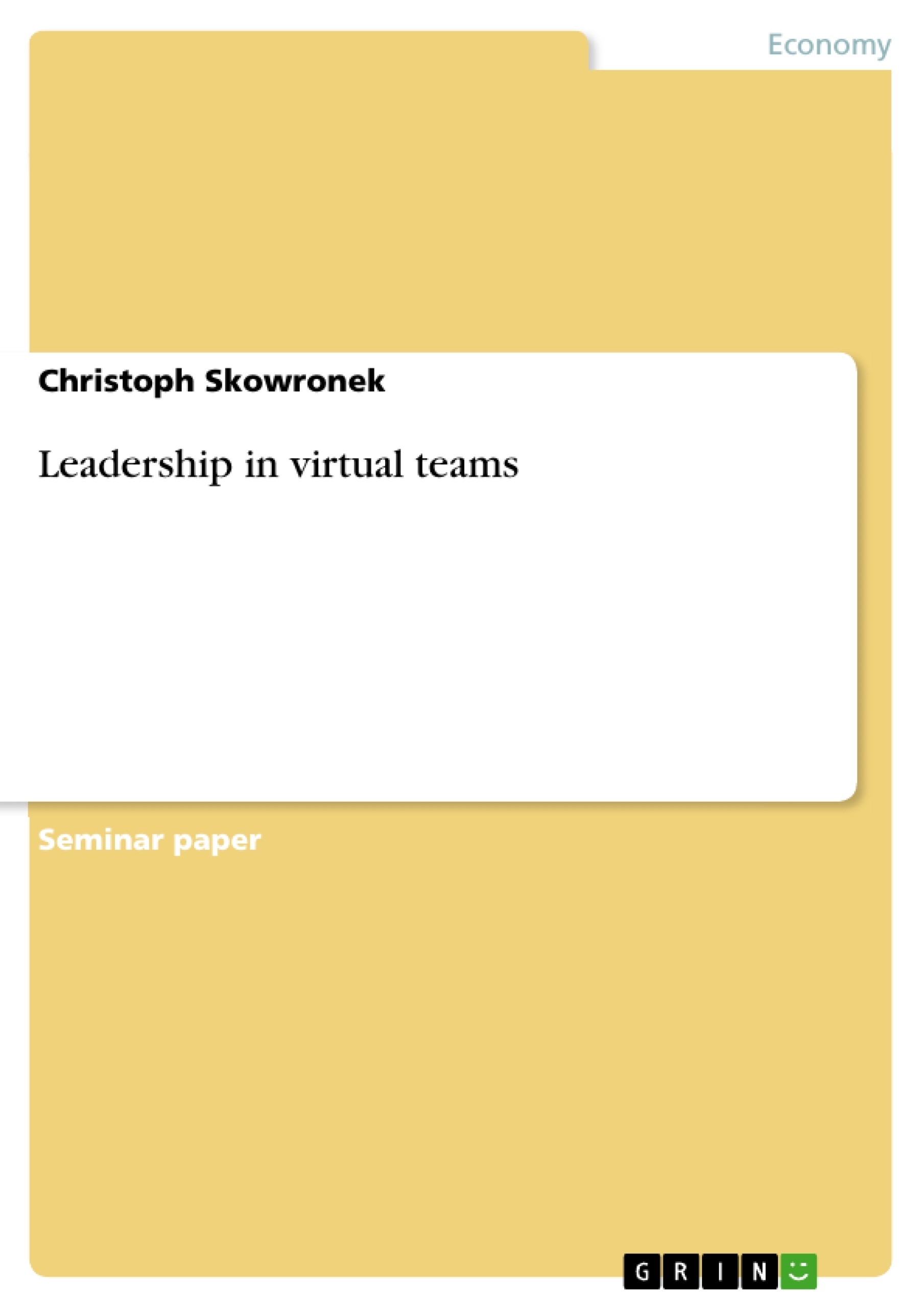The aim of this seminar paper is to show potentials and problem areas of virtual teamwork and to analyse aspects of the changed leadership and leadership function. The focus of this paper is on teamwork in a virtual context, which is also the object of study. The procedure consists of a literature analysis with two sub-aspects. The first part is dedicated to the team, the second to the leadership of such teams.
In the first theoretical section, the causes of virtual teamwork and team building are discussed and the concept of team is defined. A distinction is made from conventional teams.
In the following descriptive section, the challenges and problem areas as well as potentials of virtual cooperation in teams are highlighted. Reference is made to team development and the life cycle in order to reflect on the problems of the team building process. Phases and tasks of management are pointed out and serve for the second theoretical section.
This section refers to the implication of personnel management and strategic models for the management of virtual teams. Basic goals and forms of leadership are discussed. Determinants and fields of action of performance behaviour are described. A brief overview of the basic leadership theories, leadership styles and leadership instruments will enable the changed focus on virtual teams and the changed leadership. From this, task-related strategies of leadership are derived, which are then considered as control theory models. A final conclusion enables a holistic approach with regard to successful leadership in virtual teams and summarises the most important aspects in order to be able to provide possibilities and perspectives for the changed management task.
Inhaltsverzeichnis (Table of Contents)
- Introduction and background
- Objective and demarcation
- Causes of virtual teamwork and team building
- Team vs. group term
- Virtual vs. conventional teams
- Working in a virtual team
- Challenges and problem areas
- Potential of virtual collaboration
- Team development and life cycle
- Problems of the team building process
- Phases and tasks of management
- personnel management
- Definition of leadership with target and expression forms
- Determinants of performance and fields of action
- Leadership theories, leadership styles and leadership tools
- Leadership in virtual teams
- Management by Objectives
- Strategic models of virtual leadership
- VIST model according to Hertel
- Integrative management model according to Krämer/Deeg
- MIPO model according to Köppel
- Conclusion and outlook
Zielsetzung und Themenschwerpunkte (Objectives and Key Themes)
This work investigates the challenges of leadership in virtual teams. The objectives are to identify problem areas in this context and present suitable leadership perspectives for navigating the changed leadership situation.
- The increasing prevalence of virtual teams in the 21st century corporate environment
- Challenges and problem areas associated with leading virtual teams
- Suitable leadership perspectives and approaches for virtual teams
- The impact of technology and communication channels on virtual teamwork
- The development and management of virtual teams
Zusammenfassung der Kapitel (Chapter Summaries)
The first chapter sets the stage by discussing the emergence of virtual teams and the challenges associated with them. The focus is on the objective and scope of the work, along with the factors contributing to the rise of virtual teamwork. The chapter also explores the distinction between teams and groups, and the differences between virtual and traditional teams.
Chapter two delves deeper into the dynamics of working in a virtual team. It examines the challenges and problem areas that virtual teams often face, such as communication barriers, trust issues, and cultural differences. The chapter also explores the potential benefits of virtual collaboration, such as increased flexibility, efficiency, and access to diverse talent.
Chapter three focuses on personnel management and leadership in virtual teams. It defines leadership in the context of virtual teams, examining its goals, expression forms, and determinants of performance. This chapter also explores various leadership theories, styles, and tools that can be applied to virtual teams, and examines the relevance of strategic models of virtual leadership like the VIST, Integrative Management, and MIPO models.
Schlüsselwörter (Keywords)
Virtual teams, leadership, teamwork, virtual collaboration, challenges, problem areas, communication, trust, culture, team development, management, leadership theories, leadership styles, leadership tools, strategic models of virtual leadership, VIST model, Integrative Management model, MIPO model.
- Arbeit zitieren
- MSc Christoph Skowronek (Autor:in), 2013, Leadership in virtual teams, München, GRIN Verlag, https://www.grin.com/document/1169402



